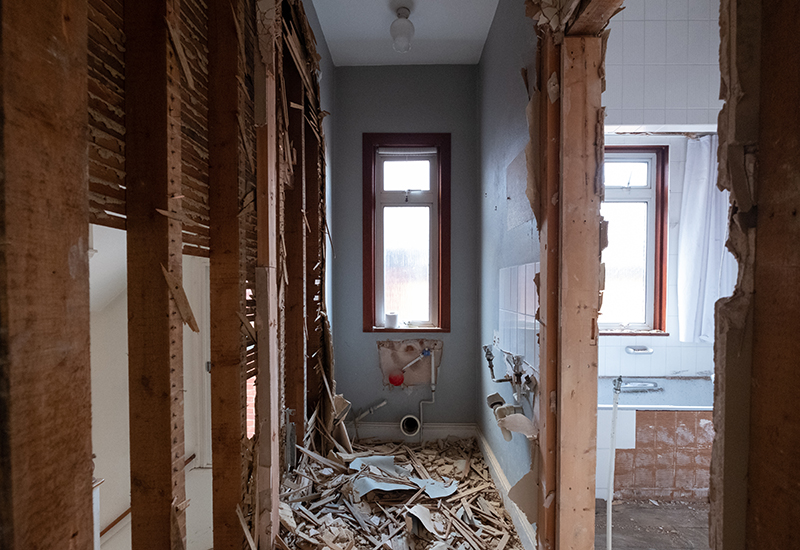What is Permitted Development?
What is Permitted Development?
You can perform certain types of work without needing to apply for planning permission. These are called “permitted development rights”.
They derive from a general planning permission granted not by the local authority but by the Government. Bear in mind that the permitted development rights which apply to many common projects for houses do not apply to flats, maisonettes or other buildings. Similarly, commercial properties have different permitted development rights to dwellings. In some areas of the country, known generally as ‘designated areas’, permitted development rights are more restricted. For example, if you live in:
- a Conservation Area
- a National Park
- an Area of Outstanding Natural Beauty
- a World Heritage Site or
- the Norfolk or Suffolk Broads.
You will need to apply for planning permission for certain types of work which do not need an application in other areas. There are also different requirements if the property is a listed building.
You should also note that the local planning authority may have removed some of your permitted development rights by issuing an ‘Article 4’ direction. This will mean that you have to submit a planning application for work which normally does not need one. Article 4 directions are made when the character of an area of acknowledged importance would be threatened. They are most common in conservation areas. You will probably know if your property is affected by such a direction, but you can check with the Local Planning Authority if you are not sure.


What can I build under permitted development?
So what works could you do without requiring planning permission? Porches, small extensions and loft conversions could all fall under Permitted Development, however there are strict criteria to adhere to. If your project falls outside of the set criteria, then it is likely you will need to submit a planning application.
Some home improvements that you can make under Permitted Development include:
- Building a small rear extension within certain limitations — this includes both single storey extensions and double storey extensions
- Building a porch less than 3sqm
- Changes of use, such as loft conversions, garage conversions and basement conversion
- Internal alterations, such as knocking down internal walls
- Installing microgeneration equipment such as solar panels (apart from wind turbines)
- Installing satellite dishes and erecting antenna
- Adding rooflights or dormer windows


What can’t I build under permitted development?
If you’re considering constructing a new home or splitting an existing property into a new residence, it’s probable that your Permitted Development rights won’t apply and a planning application will be necessary. Likewise if you’re thinking about making alterations to a listed building or a property in a specific area, there’s a good chance your Permitted Development rights will be limited. It’s crucial to consult with your local planning authority before commencing any work.
How often can you use permitted development?
Permitted Development rules are tied to the original construction of the dwelling or its status as of July 1, 1948. Therefore, the extent to which you can modify your home under Permitted Development is finite. Regrettably, previous alterations made by past owners since 1948 are also accounted for in your Permitted Development allotment, meaning the record isn’t reset when you acquire a property.


If I don’t need planning permission, do I need an Architect?
The responsibility of preparing and submitting a planning application is one of the many duties carried out by an architect. While the removal of this task alone can save you both time and money, the value that an architect brings to the table extends far beyond mere planning obligations. Therefore, it’s essential to understand the myriad benefits of employing an architect versus directly approaching a design-and-build contractor.
- Professional Expertise: An architect is trained in design, engineering, ergonomics, and aesthetics. They have the expertise and experience to translate your needs and wants into a design that is functional, beautiful, and fits with your existing structure.
- Project Coordination: Architects can manage and coordinate with different professionals involved in the project, including engineers, builders, and interior designers. They act as the central hub for all project communication, making sure that everyone is working in sync.
- Compliance with Legal Requirements: Architects are familiar with building regulations and requirements. They will ensure that your house extension is in compliance with all these laws and can help in obtaining necessary permits.
- Budget Management: Architects can work with your budget, advising on where to invest for the best value, while also finding ways to cut costs without sacrificing quality. They can help estimate costs and prevent expensive design mistakes.
- Sustainable Design: If you’re interested in creating an eco-friendly extension, architects can include energy-efficient elements and sustainable materials in their design. They can incorporate passive solar design, proper insulation, and other energy-saving features.
- Enhancing Resale Value: A well-designed extension can increase the resale value of your house. The design, efficiency, and functionality provided by a professional architect can make your property more attractive to potential buyers.
- Design Vision: An architect can help you visualize the end product with the help of sketches, plans, 3D models, and virtual reality. This can help you make informed decisions about what you want from your extension.

